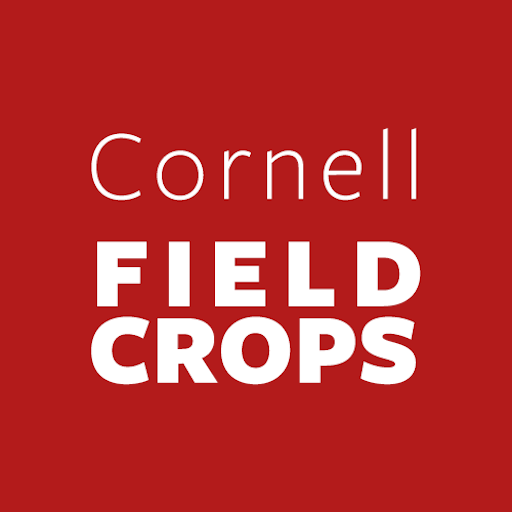Rintaro Kinoshita, Lindsay Fennell, Michael Davis, Aaron Ristow, Bob Schindelbeck, and Harold van Es
Soil and Crop Sciences Section, School of Integrative Plant Science, Cornell University
Background
Deep soil layers can be a significant sink of soil organic carbon and an important source of soil moisture and nutrients for crop growth. Distinct soil microbial communities may also be present in subsoil layers compared to topsoil due to nutrient dynamics, soil physical properties and drainage. In addition, the ‘transition layer’ between topsoil and subsoil layers may form a plow pan, resulting in compaction, and restricted root growth. With concerns about crop production under changing climate and weather patterns, we need to better understand how soil management practices impact these deeper soil layers.
Traditional soil testing on grower fields has been limited to topsoil nutrients (typically 0-6 inches in depth). Shallow soil sampling has been justified due to the challenges of sampling to deeper depths and also the relative importance of topsoil when adequate growing conditions are met. More recently, the Comprehensive Assessment of Soil Health approach, which includes analysis of soil physical, biological and chemical properties, has gained acceptance in providing information on crop growth constraints, but these assessments have also only been applied to surface soil layers. The objective of this study was to investigate the impacts of crop and soil management on soil health conditions throughout the entire soil profile.
Procedures
The soil health impacts of 40-year long continuous corn cropping under two tillage systems (plow-till vs. no-till) crossed with two residue management practices (removed vs. returned) were assessed at different soil depths. (0-to-24 inches; Fig. 1). The unique history of this experiment – conducted at the Miner Institute near Chazy, NY with four replications for each treatment — allowed us to look at the long term effects from reduced tillage, which generally improves soil aggregation, enhances soil biota, and changes rooting patterns. It also allowed us to evaluate whether reduced tillage has more or less benefits than returning corn stover as residue, which feeds the soil microbiota and provides macro-nutrients like potassium.
Using the Cornell Comprehensive Assessment of Soil Health (http://soilhealth.cals.cornell.edu/) approach, we analyzed aggregate stability in addition to the soil biological indicators of soil organic matter, active carbon, soil respiration and protein. The chemical indicators phosphorus (P) and potassium (K) were also analyzed.
Results and Discussion
Table 1 shows mean values measured for each treatment in various soil layers. We used a color scheme to help interpret the numbers from best to worst (blue-green-orange-red). For biological and physical indicators the order of the measured indicators was generally: No-till-Residue Returned > No-till-Residue Removed > Plow-till-Residue Returned > Plow-till-Residue Removed. The pattern was consistent, although the effects were statistically significant only in the topsoil layer. This shows that eliminating tillage had greater benefits for soil health throughout the soil profile than returning residue, though stover return was shown to be important in avoiding the depletion of macro- and micro- nutrients, especially potassium, under No-till below the surface layer.
Interestingly, the continuous No-till-Residue Returned maintained soil conditions closest to a benchmark comparison sample from continuous mixed sod, compared to Plow-till or Residue Removed treatments. It is noteworthy that, under No-till-Residue Removed, subsoil nutrient values were the lowest. This demonstrates possible nutrient mining when crop residue is removed for other uses and emphasizes the importance of full soil profile nutrient budgeting for long-term management decisions (Note: fertilizer applications were uniform across treatments)
Finally, we found unique soil conditions in the transition layer (7-to-12 inch depth, Table 1) where the relative benefits from the treatments were different from the other layers, because the surface residue is placed at this depth under Plow-till. This seems to benefit the transition layer only and not the layers above or below. In deeper soil layers, Plow-till had lower soil organic matter content and related soil physical, biological and chemical properties due to a lack of transfer from the topsoil to subsoil layers.
These are interesting results as they show that No-till benefits soil health not only in the surface layer but also deeper into the soil, especially when corn stover is left in the field. Conversely, Plow-till places organic residues at the bottom of the plow layer (transition layer), but does not show benefits in other layers. Why is this the case? We hypothesize that the main benefits come from greater and deeper biological activity under No-till, especially when residue is left in the field (Fig. 1). We now have a better understanding of how critical decreasing soil disturbance through reduced tillage enhances biological activity, which may extend deep into the soil with worm species like night crawlers. They transport organic material from the surface deep down into the profile. The continuous deep soil pores may also transport dissolved organic carbon deeper into the soil with percolating water. We also generally see more vertical and deeper roots with No-till, which additionally helps transfer organic material down to deeper layers.

Conclusions
This study found that combinations of tillage and residue management affect soil health at different depths, which can in turn affect the overall availability and accessibility of soil moisture and nutrients from the soil system. The direct impacts of tillage and residue management occur mostly near the soil surface, but also have effects on soil properties deep in the profile, where no-tillage and residue return positively influence subsoil conditions. The long term yields from these plots have followed the same pattern as the soil health measurements, where plots with no-tillage and residue return out yield those with plowing and residue removal.
Acknowledgements
This article is based on a paper titled “Quantitative soil profile-scale assessment of the sustainability of long-term maize residue and tillage management” (Kinoshita et al., 2017; accepted in Soil and Tillage Research).
This work was supported by grants from the Northern New York Agricultural Development Program.


